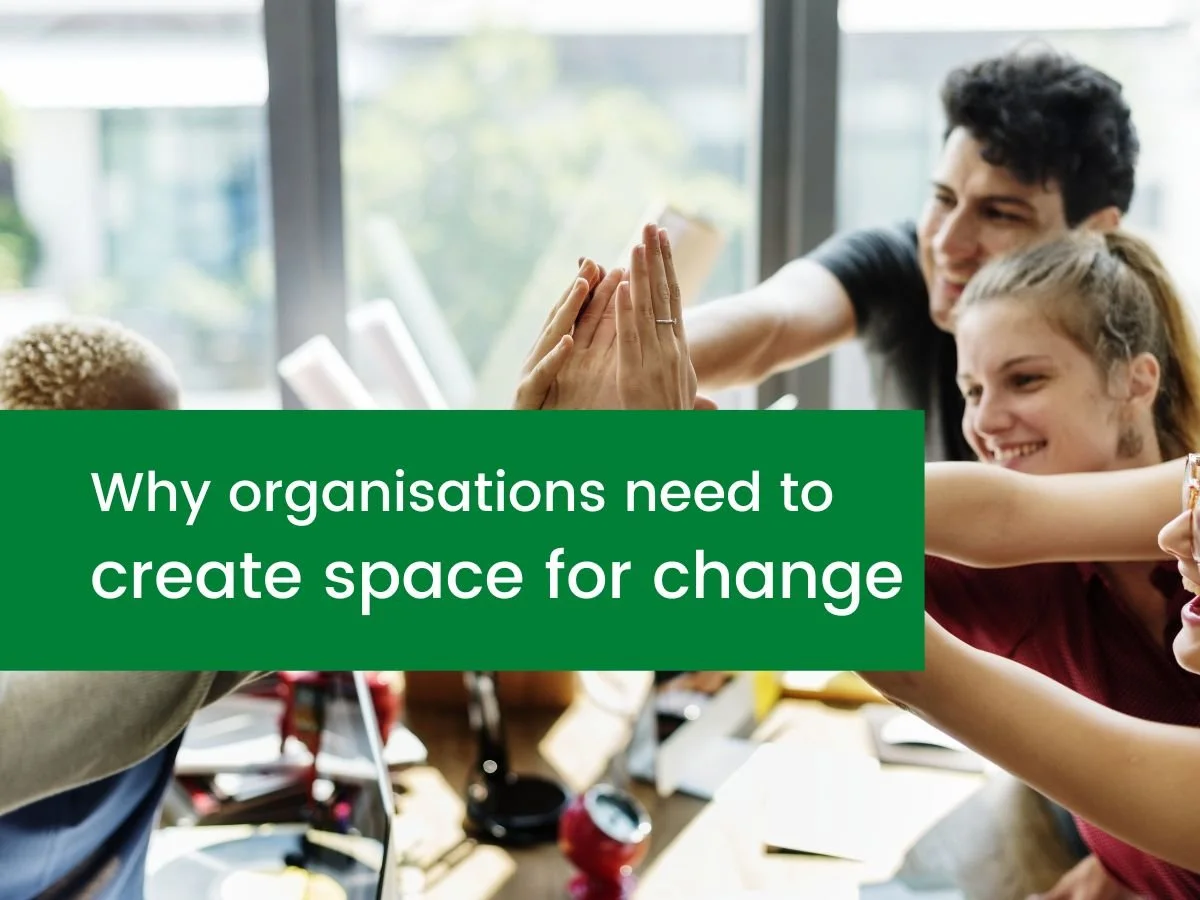Why organisations need to create space for change:
How often do we see large-scale change initiatives flounder as individuals and organisations try to ‘make it’ happen. Armed with a plan and a set of tasks they focus on activities rather than the overall system in which they are operating.
There seems to be this insatiable desire to be seen to be ‘doing things’ as it will surely result in outcomes and rewards for those driving the initiative. But will constant ‘busyness’ around undertaking actions really result in any substantial change if those groups needing to be involved are not meaningfully engaged.
In many situations there is a focus on short-term interventions rather than stepping back and looking at the entire system and how it operates. There is often more attention paid to getting a plan developed and getting some action than trying to truly understand how all the stakeholders interact and how might they be mobilised for action.
In his article on Systems Leadership published in the Stanford Review in the winter of 2014, Peter Senge talks of the need to create enabling conditions for change:
“Ineffective leaders try to make change happen. System leaders focus on creating the conditions that can produce change and that can eventually cause change to be self-sustaining.”
One of these enabling conditions is the ability to ‘create the space’ for people to come together and explore possibilities and have the conversations they need to have to become fully engaged and aligned.
But we see tension here, as ‘creating space’ is often not seen as a productive activity and is not valued as a process. How can sitting around having lots of conversations get results – it just ends up a talkfest. Sound familiar? How many times have you heard this during your career? Even when you know in yourself that what is needed is to stop doing and to sit down and have a conversation with others, there is this constant pressure to get on with it and do things.
Some years ago in my home state of South Australia, I was involved in a major collaborative initiative focussed on developing a business vision for the state. Representatives from government, business, community leaders, faith leaders and politicians of all persuasions came together in a series of roundtables to have conversations around the future of the state.
This initiative was unique at that time as it provided a platform for people from different organisations and sectors to interact in a way that had not happened before in this state. It was an intervention that looked past the short term immediate results to try and focus on a long-term change process for the state. It produced some excellent projects and initiatives, a number of which were spun off and still operate today.
This is just one example of how creating a space for conversation can give people permission to come to the table and look at the whole system rather than be driven down a narrow path that leads to short terms solutions with no long term change.
Creating a space for change to emerge provides an opportunity for people to:
Reflect and think about the question or questions that need to be asked rather than jumping to solutions too quickly
Build a collective mindset and shared leadership over time leading to greater shared ownership of an initiative
Have a safe space to open up and share thoughts, ideas and feelings to a deeper level, which helps to build trust and the possibility of new thinking
Look longer term rather than focus entirely on short term solutions that will not create the transformational change needed
While the concept of ‘creating the space’ has many benefits as a catalyst for large-scale change, it takes visionary skills to influence those around you to take this path. Our current systems and bureaucracies keep drawing us back to the old ways of operating. It needs strong conviction and drive and an awareness of the larger system at play to create these spaces and enable the quality conversations needed to take place.

